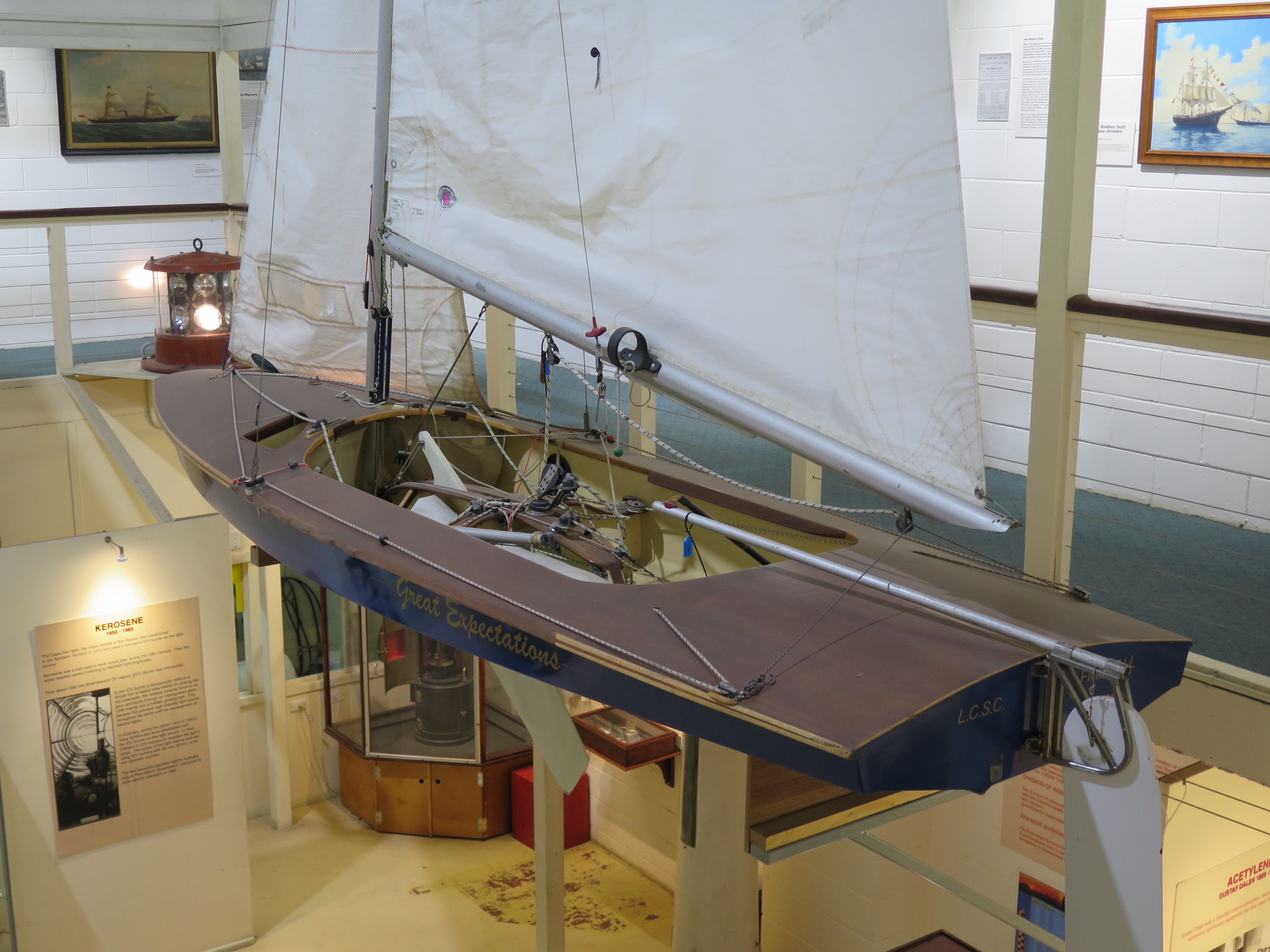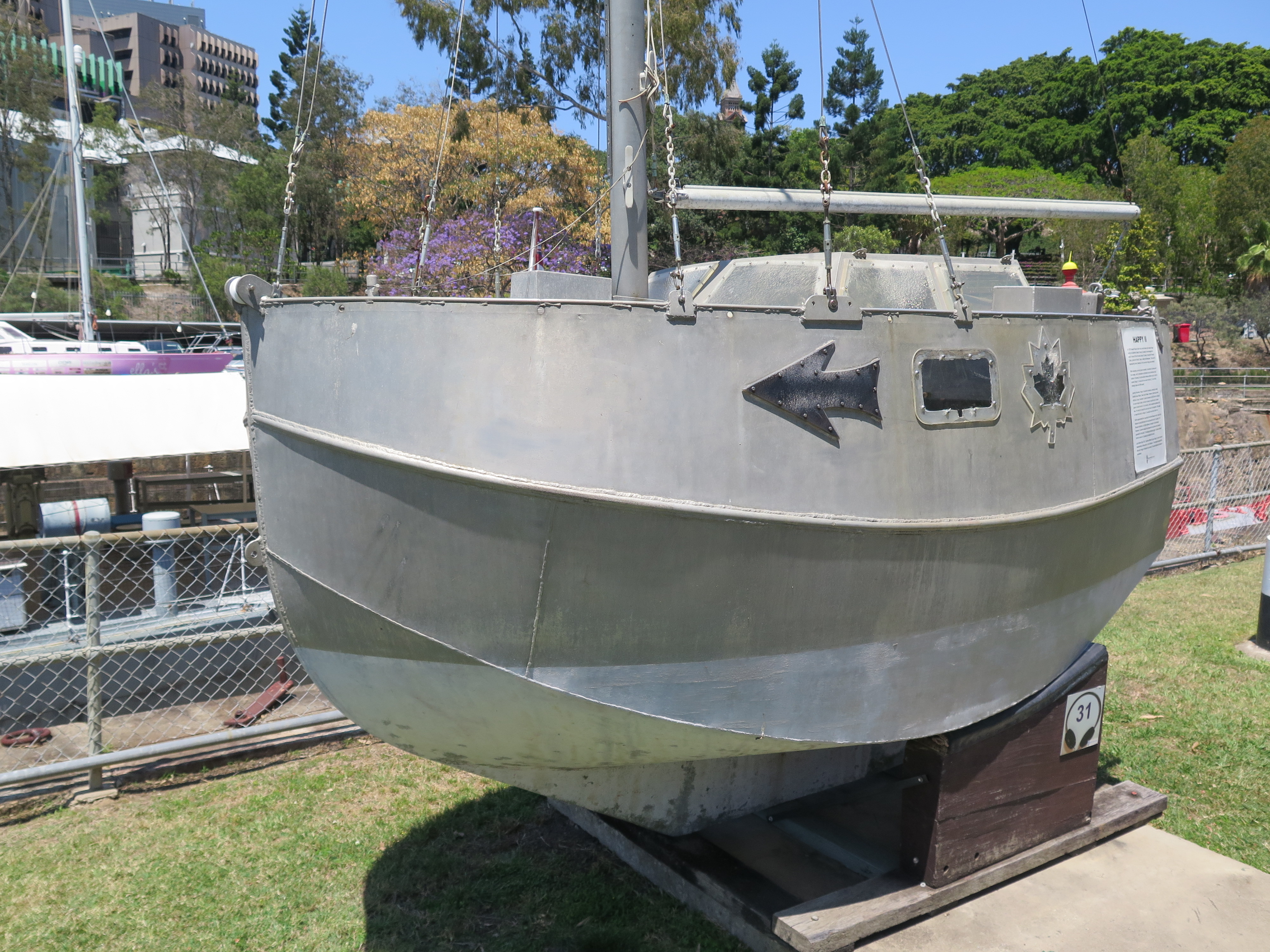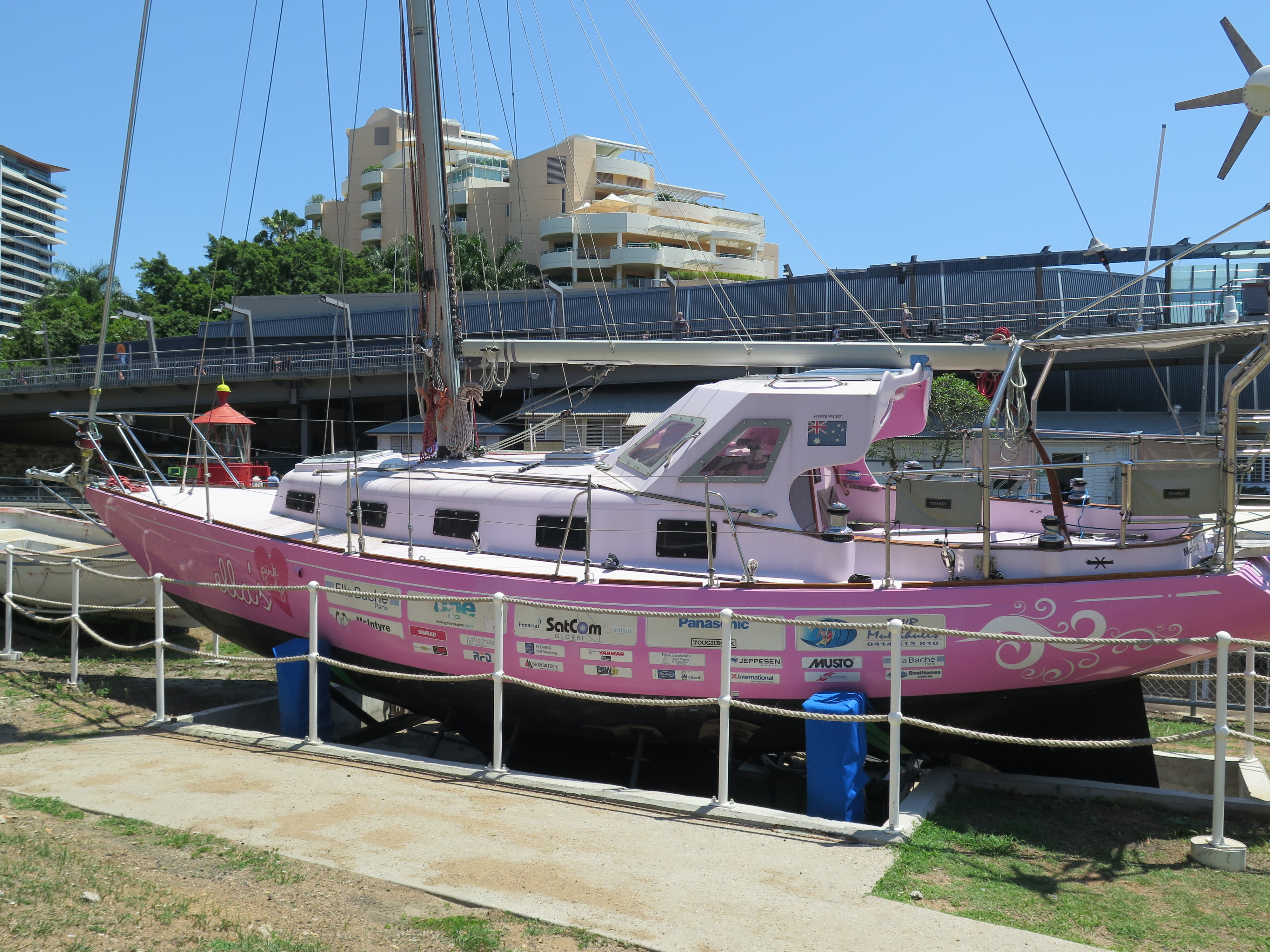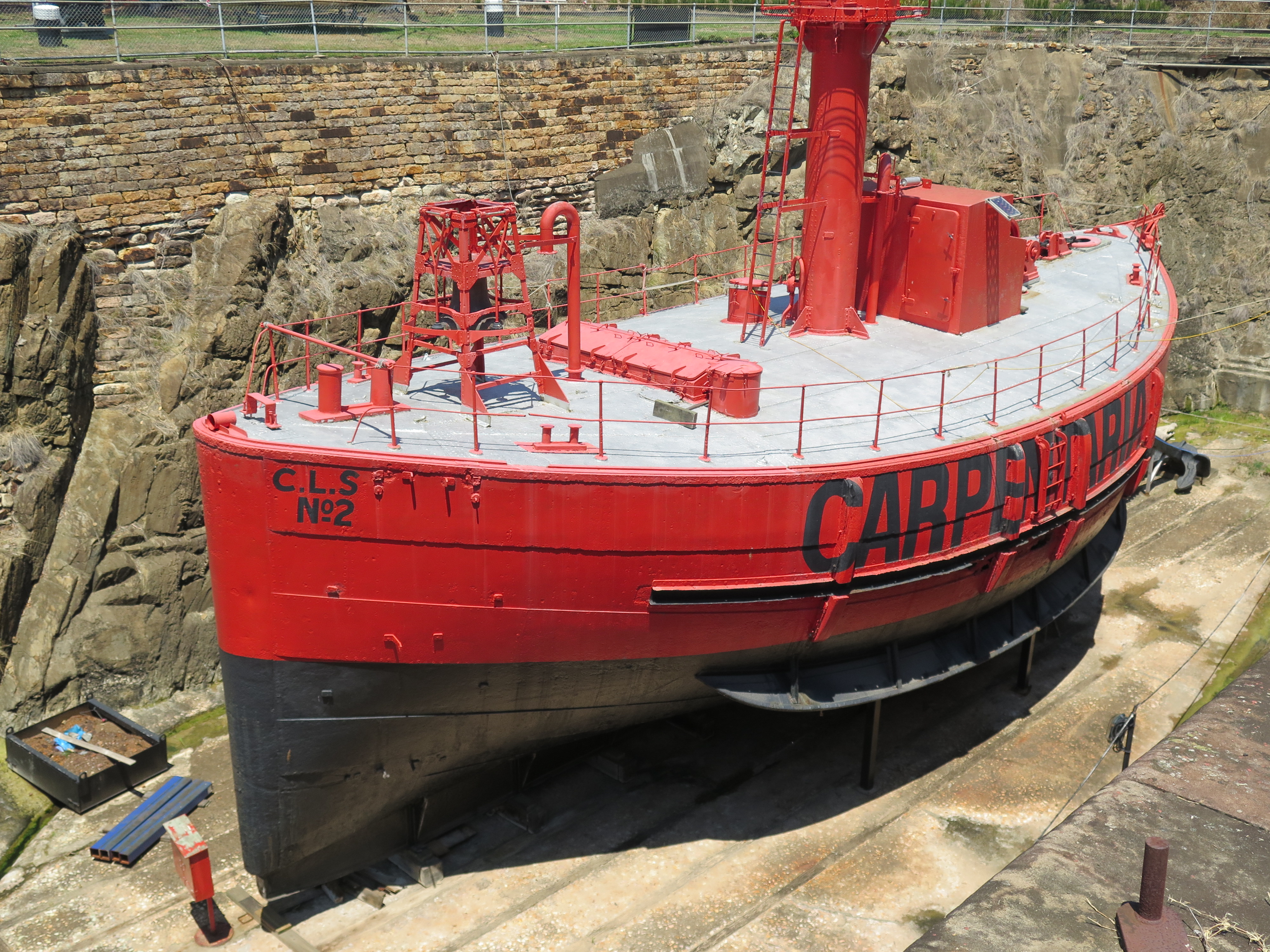If I have a superpower (and clearly I don’t!), then it would be finding boats and maritime museums wherever we go. Today was no exception. We started on a boat …. the free Cityhopper ferry along the Brisbane River. This started just outside the hotel and a few stops later dropped us by South Bank and the Queensland Maritime Museum. Given that walking past a maritime museum is never an option, we headed in for a look round.
This one stood in marked contrast to the very slick and professional exhibits of the Sydney Maritime Museum. However, this did not make it any less interesting. In fact, hidden amongst the exhibits were some gems. A new exhibition on immigration had been set up on the first floor. This gave lots of information about the ships which brought the early immigrants and the various passenger lines set up to do this. in the early days Brisbane was part of New South Wales and it wasn’t until 10th December 1859 that the Colony of Queensland became a separate state. This separation, as it is known, allowed the state government to attract new settlers themselves and the first 10 year contract was awarded to Mackay, Baines and Co – the Black Ball Line – perhaps a slightly unfortunate name in the circumstances! Over the ten years of the contract more than 50 Black Ball sailing ships arrived in Moreton Bay carrying nearly 40,000 new settlers to the colony. This was an arduous journey taking 90 – 120 days from Europe, one of the main hazards being illness. Many died on passage and a number of children were born stateless en route to their new home ….
Alongside the exhibit, but with no imaginable connection hung a Fireball dinghy. I still have no idea why it was there, but it was lovely to see one as I sailed them for many years.

In another room were a number of ship models. Some of these were of immigrant ships, but one intriguing one was of the Duyfken (the Little Dove). This is the Dutch ship which made the first recorded landfall on the Australian continent – over 160 years before Cook claimed it for England. The Duyfken was part of a fleet of ships dispatched to the Dutch East Indies and tasked with finding new trading routes. Captain Janszoon sailed into the Gulf of Carpentaria, but every time he tried to land was attacked by the natives. Given he was running short of supplies and seeing no possible trading opportunities, he abandoned Australia without realising he had discovered a new continent. He thought he had sailed along a further piece of the New Guinea coast. He would have killed for a GPS and chart plotter!

Outside were a number of further exhibits – a naval frigate in the dry dock, a lightship and a rather bizarre cruising boat – the Happy II. It seems that, as a boat, Happy II belies her name. Her predecessor – imaginatively named Happy – was a small wooden cruiser built in Canada for Howard Wayne Smith to sail round the world. She was less ‘happy’ when she hit a reef in New Caledonia and sank. Undaunted, he had another boat built – this time in aluminium – Happy II. He successfully made landfall near Ballina in new South Wales, but he didn’t have a visa, so the immigration authorities impounded the boat for a $2,000 bond to cover the customs duty payable. Smith didn’t have any money so offered to sell the boat to the Maritime Museum for the cost of the bond. They politely refused the offer …. So Smith offered to donate it to the museum, but Customs wouldn’t release it to the museum without the bond being paid. They politely refused this offer …. eventually, just before Expo 88 Customs got fed up with it deteriorating in their store, so they gave in and donated the boat to the museum. However, though it was a boat, it wasn’t taking up much room in their store as Happy II, in common with Happy I is less than 9 foot long!

The other side of the dry dock from Happy II was a slightly larger boat which did successfully sail round the world and in this case Customs didn’t object as the boat left Sydney and 210 days later sailed back into Sydney. This boat was called Pink Lady and was skippered by Jessica Watson who became the youngest ever person to sail round the world arriving back in Sydney three days before her 17th birthday. She suffered multiple knockdowns but came through it all and even celebrated getting back into Australian territorial waters in true Aussie style with crackers and vegemite. Following her circumnavigation the boat was bought jointly by the State and Federal Governments and put on permanent exhibition at the Queensland Maritime Museum.

From the museum we had a lovely walk through the South Bank area and across Victoria Bridge to Queen Street. We met Jen and Cameron and Alexander at a coffee shop on Queen Street before heading off to the cathedral and then the Brisbane Museum.
